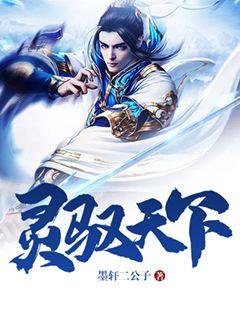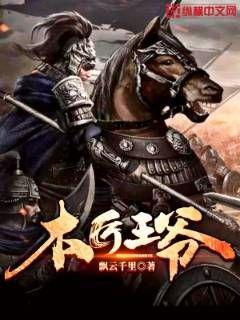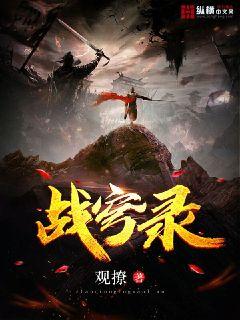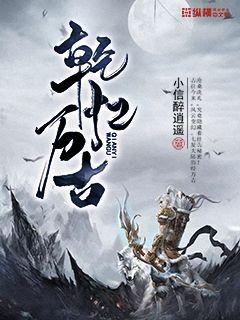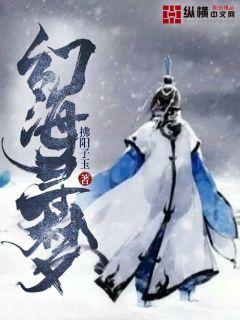
文章摘要的内容:本文将围绕韩国足球世预赛的崭新挑战与未来征程展开详细阐述。首先从韩国足球的历史和现状入手,深入分析国家队的发展现状,探讨挑战与机遇。接着讨论未来征程中的战术和人才培养方面的问题,并对韩国足球的发展前景进行展望。最后总结全文观点,展望韩国足球的未来。
1、韩国足球的历史与现状
韩国足球的起源和发展历程
国家队目前的战绩和排名
近年来韩国足球取得的成就
2、国家队的挑战与机遇
国家队面临的困难和挑战
如何解决现有问题,抓住机遇
重塑国家队形象的发展策略
3、未来征程中的战术规划
新一轮世预赛的战术安排
如何应对各个对手的挑战
提高球队整体实力和竞争力
4、人才培养与发展前景
青训体系的建设和完善
发掘未来的足球明星
对韩国足球未来发展前景的展望
总结:
韩国足球面临新的挑战和机遇,通过加强国家队建设、战术规划和人才培养,未来有望在国际赛场上取得更大的成功,为韩国足球的发展锦上添花。
随着时间的推移,韩国足球将不断迎来新的挑战,但也将在不断努力和改进中展现出更加辉煌的未来。
### 文章摘要
英格兰球员德的崛起从青训到国家队,展现了英格兰足球青训体系的深厚积累和他个人的成长历程。从早期的培养到在国际赛场上的光辉表现,德体现了天赋与努力的完美结合,成为英格兰足球的新秀和未来希望。
### 1、青训之路
英格兰足球青训体系的背景与发展
德早期在青训阶段的表现与成长
青训教练与资源对德成长的影响
### 2、职业生涯的起步
德进入职业俱乐部后的表现与机会
初露头角:在青年队和预备队的表现
德在职业生涯初期面临的挑战与适应
### 3、国内联赛的突破
德在英格兰联赛中的突破与进步
关键时刻的表现:进球、助攻与比赛评价
英格兰联赛对德国家队未来的影响与意义
### 4、国家队征程与国际赛场的辉煌
德首次入选国家队的背景与经历
国际比赛中的精彩表现与成就
德在国家队中的角色与未来展望
总结:
英格兰球员德从青训到国家队的崛起,不仅展示了他个人的成长历程和技术进步,也反映了英格兰足球青训体系的有效性和国内联赛的竞争力。他在国际赛场上的表现为英格兰队带来了新的希望,未来他将继续成为球队的重要一员。
文章摘要:在足球场上,球员突然脱鞋的背后往往隐藏着深刻的故事。这种看似不可思议的行为,背后可能是对自己、队友或对手的一种表达,也可能是情感激荡或意外事件的反映。本文将从个人情感、战术策略、健康因素和文化背景四个方面深入探讨这一现象,揭示脱鞋行为背后的多重含义和深层次的内涵。
1、个人情感表达
球员在比赛中脱鞋可能是情感表达的一种方式。有时候,这种行为代表着对过去或现实生活中的挑战的回应,是一种情感的宣泄。例如,当球员遭遇到重大个人困境或家庭问题时,他们可能选择通过这种行为来释放内心的压力。
此外,个人情感还可能来源于对比赛过程中的特定事件的反应。例如,一场激烈的对抗或是对不公正裁判的愤怒可能激发球员脱鞋的冲动。
而有时,球员脱鞋还可能是在表达对某一特定人物或群体的敬意或不满。比如,对某位老师、家长或政治领袖的敬意,或者是对社会不公正现象的抗议。
2、战术策略调整
脱鞋行为在足球场上有时也是一种战术策略的表现。在某些情况下,球员可能会脱鞋以减少速度或加强控球。这种战术调整可能是因为场上环境或对手策略的变化,需要球员迅速作出反应。
此外,有时脱鞋也可能是因为鞋子出现了问题,比如断鞋带或者鞋子太紧,影响了球员的舒适度和表现。在这种情况下,脱鞋可能成为暂时的解决方案,以维持比赛中的舒适和竞技状态。
还有一些更为复杂的战术策略,比如球员在关键时刻脱鞋以吸引对手注意力或改变比赛节奏,这种策略可能会对比赛结果产生重大影响。
3、健康与身体因素
在足球场上,健康因素也可能导致球员脱鞋。例如,球员可能因为脚部伤病或不适而选择脱鞋以减轻疼痛或压力。这种情况下,脱鞋可能是一种自我保护的反应,帮助球员在比赛中继续发挥。
此外,对一些球员而言,脱鞋也是一种保持身体和心理平衡的方式。在激烈的比赛中,脱掉鞋子可能会使他们感觉更自由和舒适,有助于调整状态和恢复比赛的节奏。
而有时,健康因素也可能是球员做出脱鞋决定的唯一动机,例如在酷热的天气下,为了散热和舒适度,一些球员可能会选择脱掉鞋子。
4、文化与社会背景影响
球员脱鞋行为背后还可能反映出他们所处的文化和社会背景。在某些文化中,脱鞋可能象征着一种特定的信仰、传统或仪式。例如,一些亚洲国家的足球运动员可能会因为宗教信仰而在比赛中脱鞋。
此外,社会背景也可能影响球员脱鞋的决定。在某些社会运动或政治抗议中,脱鞋可能被用作一种象征性的表达方式,以传递特定的社会信息或政治立场。
在足球文化中,球员脱鞋的理由和意义往往不仅限于个人行为,更可能深深扎根于广泛的文化和社会背景之中。
总结:
球员在比赛中脱鞋,背后可能隐藏着复杂而多样的原因。无论是情感宣泄、战术策略、健康考量还是文化因素,每一次脱鞋都可能是一种个人、团队甚至是社会层面的表达。这种看似简单的行为,实质上承载了丰富的内涵和背景故事,深刻地影响着足球比赛的进程和结果。
脱鞋的行为,超越了简单的装备调整,它是球员内心情感和外部环境交互的体现,是足球文化中一个富有深意的象征。
文章摘要:韩国足球风云:历史、明星与未来。本文将深入探讨韩国足球的历史渊源、著名球星、以及未来发展。透过多个方面的讨论,展现韩国足球历史的辉煌成就、明星球员的光芒和未来的发展前景。让读者深入了解和感受韩国足球的风云变幻,以及其在国际足坛上的重要性和影响。
1、历史概览
韩国足球历史可追溯至19世纪末,最早受英国传教士影响。
20世纪初,足球在韩国开始流行,跃升为一项重要的国民运动。
韩国国家队曾在20世纪60年代至80年代频频获得亚洲杯佳绩,为建立足球传统奠定基础。
2、著名球星
朴智星,作为韩国足球历史上的传奇人物,他的技术和领导力影响着一代又一代的球员。
孙兴慜,作为韩国现代足球的代表人物,他在欧洲联赛中的表现备受瞩目,为韩国足球争光。
金英权,以出色的后卫表现赢得球迷认可,他的坚韧和拼搏精神成为韩国足球的象征。
3、未来展望
韩国足协不断加强基层建设,投入大量资源培养年轻球员,为未来培养更多优秀球星。
韩国球员逐渐向欧洲顶级联赛挑战,提升整体水平,展现国家队发展的新动向。
跨界合作、引进外籍教练等举措不断推进,为韩国足球的国际化发展提供机遇。
4、总结归纳
韩国足球凭借丰富的历史底蕴和出色的球员,持续在国际赛场上崭露头角。
未来,韩国足球将在融合传统与创新的道路上不断前行,奔向更辉煌的明天。
### 文章摘要
本文探讨了在球队阵容不足的情况下,如何有效地应对挑战。首先分析了数量不足对球队的影响,接着提出了四个关键方面的策略:战术灵活性、训练与健身、心理调适和团队精神的重要性。每个方面深入探讨了如何通过具体措施应对球员不足的困境。最后,通过总结归纳,强调了适应性和领导力在解决这一挑战中的关键作用。
---
1、战术灵活性
球队阵容不足时,战术的灵活性尤为重要。首先,需要根据现有球员的特长和能力调整战术体系。例如,可以采用更加紧凑的战术形式,强化中场控制,减少对人数优势的依赖。其次,应通过训练和战术演练,培养球员在不同位置上的多功能性,以便根据比赛进程随时调整战术布局。
战术变化的实施需要球队成员之间密切的沟通和理解,这可以通过定期的战术会议和小组讨论来促进。同时,教练组需要保持灵活性和创新性,随时根据对手和球员状况调整战术,以达到最佳的比赛效果。
战术灵活性不仅能够弥补人数不足带来的劣势,还能通过精妙的战术安排,最大化每位球员的潜力,提升整体比赛表现。
2、训练与健身
在面对球员数量不足的挑战时,优化训练和健身计划至关重要。首先,需通过个性化的训练方案,提升每位球员的体能和技术水平。这包括制定针对性的力量训练和灵活性训练,以减少因人员不足导致的疲劳和伤病风险。
其次,强化球员的战术意识和应对能力,通过模拟比赛情境的训练,提高球员在压力下的反应速度和决策能力。同时,重视集体训练和小组对抗,培养球队整体的默契和配合能力。
通过科学的训练和健身管理,球队能够在人数不足的情况下,依然保持高水平的竞技状态,提升在比赛中的竞争力。
3、心理调适
球员数量不足可能给球队带来心理压力和焦虑感,因此心理调适显得尤为重要。首先,教练和心理专家应密切关注球员的心理状态,提供情绪支持和心理辅导,帮助他们保持良好的竞技状态。
其次,通过团队建设活动和集体讨论,增强球队的凝聚力和团队精神。建立积极的团队文化和价值观,使每位球员都感到被重视和信任,从而提升整体的比赛表现。
有效的心理调适不仅有助于缓解球员的焦虑和压力,还能提升他们的比赛信心和自我调节能力,使球队在关键时刻保持冷静和稳定。
4、团队精神的重要性
在球员数量不足的情况下,团队精神的重要性不可忽视。首先,要通过明确的团队目标和价值观,激励每位球员为团队荣誉而战。建立良好的沟通机制和合作氛围,使球员能够相互支持和协作,共同应对挑战。
其次,教练和领导者需要起到榜样和引领作用,通过身体力行和言传身教,塑造积极的团队文化。鼓励球员互相帮助和信任,建立起稳固的团队基础。
团队精神的培养需要时间和耐心,但它能够使球队在逆境中迸发出无穷的力量,实现超越个人能力的集体成就。
总结:
球队在面对阵容不足的挑战时,战术的灵活性、科学的训练与健身、有效的心理调适以及强大的团队精神是应对挑战的关键。通过这些方面的综合应对,球队能够最大化每位球员的潜力,保持竞技状态,并在比赛中取得优异表现。
适应不足人数的挑战,不仅是一项技术上的挑战,更是一次团队凝聚力和领导力的综合考验。
Certainly! Here's the structured article on "Optimizing Training Performance through Nutrition and Diet for Professional Athletes":
**Abstract:**
Professional athletes rely heavily on nutrition and diet to enhance their training performance. This article explores key factors that optimize their performance through dietary strategies. It examines the role of macronutrients, micronutrients, hydration, and timing of meals in maximizing athletic potential. By understanding and implementing these factors, athletes can achieve peak performance and maintain optimal health.
---
**1、Macronutrients:**
Macronutrients play a fundamental role in the diet of professional athletes, influencing energy levels, muscle recovery, and overall performance.
Athletes typically require a balanced intake of carbohydrates, proteins, and fats to meet their energy demands and support muscle repair.
Carbohydrates serve as a primary fuel source, especially during high-intensity activities, emphasizing the importance of adequate intake and timing to sustain performance.
1、Proteins:
Proteins are essential for muscle repair and growth, with athletes needing slightly higher amounts to recover effectively from training sessions.
Timing protein consumption around workouts is crucial for maximizing muscle synthesis and adaptation to exercise-induced stress.
A variety of protein sources, including lean meats, dairy, and plant-based options, offer athletes flexibility in meeting their nutritional needs.
2、Fats:
Healthy fats contribute to sustained energy levels and support overall health in athletes, emphasizing sources like nuts, seeds, and fatty fish.
A balanced intake of omega-3 and omega-6 fatty acids aids in reducing inflammation and optimizing recovery post-training.
Adjusting fat intake based on training intensity and individual metabolic needs helps athletes maintain optimal body composition and performance.
3、Carbohydrates:
Carbohydrates are critical for replenishing glycogen stores and providing quick energy during intense exercise sessions.
Choosing complex carbohydrates such as whole grains and vegetables ensures sustained energy release and supports prolonged athletic performance.
Strategic carb-loading before competitions or high-demand periods helps athletes maximize glycogen storage and enhance endurance.
---
**2、Micronutrients:**
Beyond macronutrients, micronutrients are essential for maintaining overall health, supporting immune function, and optimizing athletic performance.
Athletes require adequate intake of vitamins and minerals to support physiological processes, including bone health, oxygen transport, and muscle contraction.
Key micronutrients such as iron, calcium, vitamin D, and antioxidants play crucial roles in reducing the risk of injury and illness among athletes.
1、Iron and Calcium:
Iron is vital for oxygen transport and energy production, particularly significant for endurance athletes to prevent fatigue and optimize performance.
Calcium supports bone health and muscle function, essential for maintaining skeletal integrity and reducing the risk of stress fractures.
Ensuring sufficient intake of these minerals through diet and, if necessary, supplementation helps athletes meet their unique nutritional demands.
2、Vitamins and Antioxidants:
Vitamins such as vitamin D, C, and E contribute to immune function and recovery, aiding in the repair of muscle tissue and reducing oxidative stress.
Antioxidants from fruits, vegetables, and nuts help mitigate exercise-induced inflammation and support cellular repair processes post-exercise.
Strategies to incorporate a diverse range of micronutrient-rich foods into an athlete’s diet promote overall health and optimize training adaptations.
3、Hydration:
Hydration is critical for maintaining performance and preventing dehydration-related complications during training and competition.
Athletes should monitor fluid intake to replace losses through sweat, adjusting consumption based on environmental conditions and individual sweat rates.
Optimal hydration supports thermoregulation, nutrient transport, and cognitive function, enhancing overall athletic performance and recovery.
---
**3、Timing of Meals:**
The timing of meals and nutrient intake around training sessions is crucial for optimizing energy availability, promoting recovery, and supporting adaptation to exercise stress.
Strategic meal timing helps athletes maximize glycogen storage, enhance muscle protein synthesis, and minimize muscle breakdown.
Pre-exercise nutrition focuses on providing adequate carbohydrates for fuel and minimizing gastrointestinal distress during workouts.
1、Pre-Exercise Nutrition:
Consuming a balanced meal or snack containing carbohydrates and a moderate amount of protein 2-4 hours before exercise provides sustained energy and supports muscle function.
Hydration before exercise ensures adequate fluid balance and enhances thermoregulation during physical exertion, optimizing performance and reducing the risk of dehydration.
2、Post-Exercise Recovery:
Immediately following exercise, consuming a combination of carbohydrates and proteins within the first 30 minutes to 2 hours supports glycogen replenishment and muscle repair.
Timing protein intake post-exercise stimulates muscle protein synthesis, facilitating recovery and adaptation to training-induced stress.
Incorporating micronutrients and fluids into post-exercise meals aids in rehydration, replenishment of electrolytes, and overall recovery.
3、Nutrient Timing Strategies:
Strategically timing meals and snacks throughout the day maintains stable blood sugar levels and sustains energy for consistent training performance.
Adjusting nutrient intake based on training volume and intensity helps athletes meet their energy demands and achieve optimal nutrient timing for enhanced performance.
Individualized nutrition plans tailored to training schedules and performance goals optimize nutrient timing strategies, supporting long-term athletic success.
---
**4、Conclusion:**
Optimizing training performance through nutrition and diet involves a comprehensive approach focusing on macronutrients, micronutrients, hydration, and meal timing.
By understanding the role of each component and implementing evidence-based strategies, athletes can enhance performance, support recovery, and maintain overall health.
Continued research and personalized nutrition plans are essential to meet the unique needs of professional athletes and maximize their athletic potential.
Overall, integrating these key factors into a structured nutrition plan empowers athletes to achieve peak performance and excel in their respective sports.
王冠宇:年轻才俊的足球传奇与未来路向
摘要:王冠宇作为足球运动员,展现了出色的技术和天赋,他的成长经历与未来发展备受关注。本文从个人成长、职业生涯、家庭背景和未来展望四个方面对王冠宇进行详细阐述,展现他的传奇与未来路向。
1、个人成长
王冠宇从小展现出对足球的热爱,靠着不懈努力和才华脱颖而出。
他在足球领域取得的成就和个人经历让他成为了广大球迷关注的对象。
王冠宇的个人品质和性格特点也对他的足球生涯产生了深远的影响。
2、职业生涯
王冠宇在职业生涯中所取得的成绩和经历,为他未来的发展打下了坚实的基础。
他所效力的俱乐部和国家队的表现,让人们对他的未来充满期待。
在职业生涯中的挑战和成长,塑造了王冠宇作为足球传奇的形象。
3、家庭背景
家庭背景对王冠宇的成长和发展起到了重要的支持和影响。
他的家庭教育和家人的支持是他成功的重要保障,也让他有了更多的动力和信心。
家庭的温暖和关爱,让王冠宇在足球道路上走得更加坚定和自信。
4、未来展望
王冠宇未来的路向备受瞩目,他有望成为足球界的新星和代表。
他对未来的规划和追求展现了他对足球事业的坚定决心和追求卓越的态度。
对于王冠宇未来的发展,人们满怀期待,期望他能成为足球传奇的典范。
总结:
王冠宇作为年轻才俊,展现出了不凡的足球天赋和个人魅力。
他的传奇足球生涯和未来路向充满着挑战和希望,让人们对他的未来充满期待。

